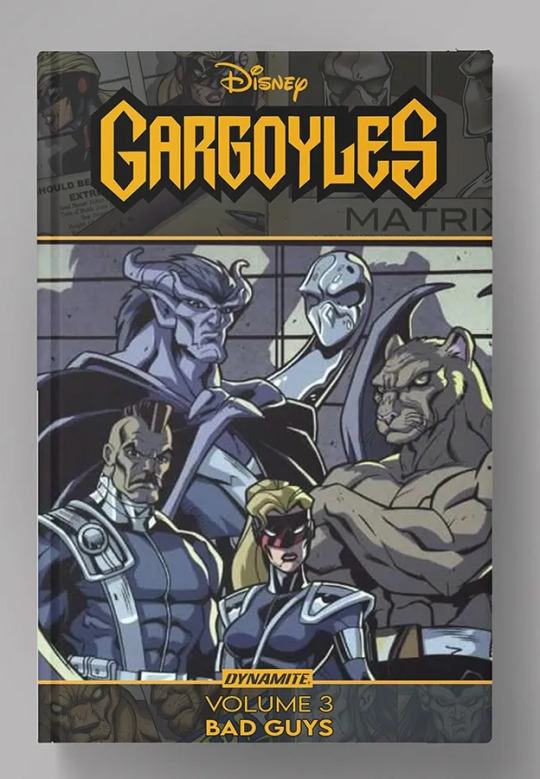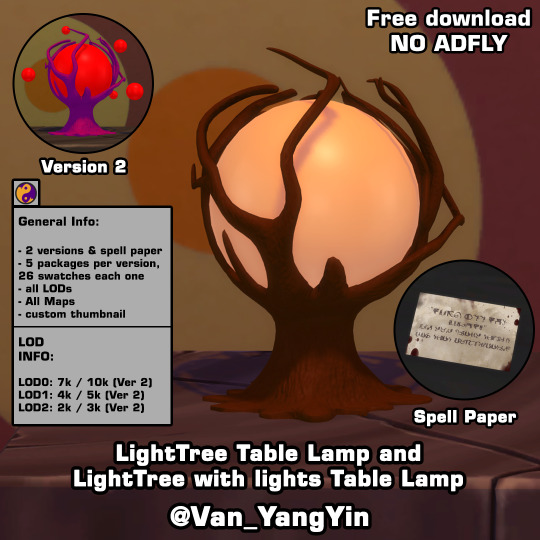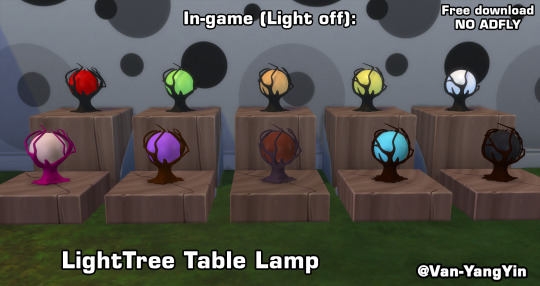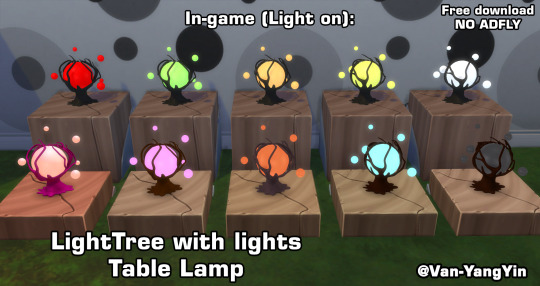#Commission-based marketing
Text
Effective Strategies for Driving Traffic to Your Affiliate Links
Driving traffic to your affiliate links is essential for affiliate marketing success. Here are some effective strategies to help you increase traffic to your affiliate links:
Content Marketing: Create valuable and relevant content that appeals to your target audience. This could include blog posts, articles, videos, infographics, and more. Focus on providing solutions to your audience’s problems…

View On WordPress
#Affiliate links#Affiliate marketing#Affiliate marketing case studies#Affiliate marketing for beginners#Affiliate marketing strategies#Affiliate marketing success stories#Affiliate marketing tips#Affiliate marketing tools#Affiliate marketing trends#Affiliate networks#affiliate programs#Blog monetization#Commission-based marketing#High-paying affiliate programs#Make money online#Niche marketing#Online income streams#Partner marketing#passive income#Product reviews
0 notes
Text
What Is Affiliate Marketing: Everything You Need to Know
Affiliate advertising has many descriptions, but all have identical means. Affiliate advertising and marketing is a huge enterprise piece on the Internet. It is a cooperative attempt among traders and an affiliate’s website. For many years now, associate advertising and marketing have proved to be a price-efficient, measurable method of delivering lengthy-tern consequences. It has become famous…

View On WordPress
#affiliate links#Affiliate Marketing#affiliate networks#affiliate partners#affiliate programs#affiliate tracking#blogging for profit#commission-based marketing#digital marketing#e-commerce#online marketing#passive income#performance-based marketing#revenue sharing
1 note
·
View note
Text
refreshing myself on the exact real prices for the kind of work that goes into these graphics was a mistake now i'm remembering why i didn't do it for years lol
#pay no attention to the man behind the curtain / ooc.#for those who aren't aware of freelance artist pricing: i've spent a whole day on a single graphic before#and the suggested base rate for a beginner graphic designer is $20-25ish an hour (i didn't see much about a flat rate for a single product)#and i also looked at illustration prices since that's adjacent#and i know it can be more project based in it's pricing and for just a small black and white spot illustration (like a chapter topper)#was on this one association's pricing guide over $250 dollars#and then i see the prices in the rp comm for gorgeous things i know are multiple hours of work going for $2-30-ish dollars#and it's just so galling. getting paid as a freelance artist is already very fraught this just feels like a kick in the teeth#even if someone's doing commissions as a hobby for pocket money i believe they deserve fair compensation for their hours of labor and skill#but i don't think the pricing in this market is ever gonna change so i just gotta get used to it or stay out lol
4 notes
·
View notes
Text
another fucking scam ass job trying to hire me for fucking door to door “performance based” pay go fuck yourself
#i asked ‘is this position commission only’ and she’s like yeah it’s performance based#like no bitch. if i am not getting an actual#hourly rate then i’m not fucking performing for u#performance based lmfao suck my performance based dick#‘in person marketing’ you mean bringing a box of knives door to door huh
2 notes
·
View notes
Note
Hi, your art is lovely! I hope you don't mind me asking but how much would you ask for a 3D model commission (just one that spins around, not like a VR chat model or anything)?
Aw hey! I'm really happy you like my stuff. I don't take commissions anymore unfortunately but to give you an idea for prices, my base prices were around $2000 for a VRC model (simple character, nothing extra) so a rigged model without a VRC port I would charge maybe $1750, and an unrigged model maybe around $1500. Hope this helps!
#Anonymous#ask#i dont take commissions anymore just due to time conflict with my job D:#and all my free time i work on bases or personal art#also 3d artists prices vary so much#you can find people much cheaper than me haha#im def on the higher end of the market
12 notes
·
View notes
Text
Market capitalizations of Ethereum-based projects experience a surge subsequent to the Securities and Exchange Commission's (SEC) approvals of ETFs.
The recent regulatory approval of 11 ETFs by the Securities and Exchange Commission (SEC) has triggered significant market cap growth for Ethereum-based projects, contributing to a broader market surge. This regulatory green light has instilled renewed confidence among investors in the cryptocurrency space, with Ethereum-based assets emerging as primary beneficiaries.
Santimentfeed, a crypto insights provider, highlighted Ethereum's remarkable market cap surge post-SEC's ETF approvals in a recent tweet. Ethereum (ETH), the leading smart contract platform, demonstrated resilience and gained traction following the SEC's decision, emphasizing its fundamental strength as a key factor in the market surge.
Examining technical indicators, Ethereum exhibited a clear bullish trend, experiencing a surge to $2,608 within the initial 24 hours after the SEC's announcement. The Relative Strength Index (RSI) signaled strong buying sentiment, residing in the overbought territory, accompanied by increased trading volume, indicative of heightened market participation.
Chainlink (LINK), a decentralized oracle network, also benefited from the ETF approvals, reflecting growing recognition of its pivotal role in the blockchain ecosystem. Chainlink demonstrated a bullish continuation pattern, forming an ascending triangle, and experienced a post-SEC approval surge to $14.88. The Moving Average Convergence Divergence (MACD) confirmed a bullish momentum shift, reinforcing positive market sentiment around Chainlink.
Uniswap (UNI), a decentralized finance (DeFi) protocol on Ethereum, was another Ethereum-based project that reaped the rewards of the ETF approvals. Uniswap, a pioneer in the DeFi movement, witnessed a breakout from consolidation, with its value reaching $7 post-SEC approval. Increased volatility, as indicated by Bollinger Bands, and a surge in on-chain metrics, including transactions and liquidity, reflected the market's response to the significant news.
In summary, the SEC's approval of 11 ETFs had a profound impact on the cryptocurrency market, particularly benefiting Ethereum-based projects like Ethereum, Chainlink, and Uniswap. This regulatory milestone underscores the market's optimistic outlook for these projects, shaping the narrative for the broader blockchain industry as it continues to evolve.
#Ethereum-based projects#SEC decisions#market surge#development activity#Ethereum strength#Chainlink ascent#breakout#technical indicators#oracle network#crypto ecosystem#market cap growth#ETF approvals#Securities and Exchange Commission#cryptocurrency market#cryptotale
0 notes
Link
Commission Based Social Media Marketing is a new and exciting way to earn income, and a great way to expand your social media following.
0 notes
Text
Affiliate-Marketing
Affiliate marketing is an effective way to generate more revenue for businesses of all sizes. It involves referring customers to another company’s product or service and earning a commission for each sale made. With affiliate marketing, you don’t have to worry about managing or stocking inventory, or even dealing with customer service inquiries. You simply share information about a product or…

View On WordPress
#Affiliate Links#Affiliate Network#Affiliate Program#Commission-based Revenue#Content Marketing#Email Marketing#Influencer Marketing#Lead Generation#Online Advertising#Pay-per-click#Pay-per-sale#Performance Marketing#Referral Marketing#SEO#Social Media Marketing
0 notes
Note
What are the questions you hate??
Okay so I don’t really HATE anything (so far) but how bout an FAQ? There are some asks I’m kind of tired of answering lol. Such as;
• “FEED ME” For one thing, it’s not even an ask 💀 So I don’t love this energy, it’s -2 charm for me. Whilst I’m grateful that folks really like the art I share (like SUPER GRATEFUL!!) I am not particularly enchanted by a demanding aura
• “when is ____ coming out”? The answer is always “I don’t know” because I draw for FUN and I draw in my FREE TIME and that varies. So for the foreseeable future, unless I EXPLICITLY state otherwise, you can expect my next post to appear on your screen whenever I post it 🥰😘
• “what programs do you use”? I don’t have a problem AT ALL with inquiring minds, I just get this ask a lot and I’ve already answered it a few times (for the inquisitive minds, please consider checking the tag ‘answers’ on this blog to find information. I’ll tag this ‘faq’) Anyway, I use pens, paper, my iPad, Apple Pencil, and Procreate. I often use brush packs made by Shiyoon Kim and Kyle Webster. I find brush packs on the creative market as well. wanna learn Clip Studio Paint, but haven’t gotten to it.
• “advice on improving in drawing”? This is a beautiful question, and I’m happy there are people who want to improve their drawing skills! I am one of you. I frequently use “YouTube university” where I will find drawing focused channels that teach you this very thing. Andrew Loomis books on drawing are like textbooks that break down the fundamentals really effectively. Like any skill, you have to research, study, and practice. The more you do of each, the better you will get. I’m trying my best to improve and master the craft eventually. (A fool’s errand haha) anyway, have fun!
• “can I fandub this”? The answer is yes!! And I hope you have a lot of fun!!! Please credit me and no monetizing. 🥰
• “can I make fanfiction/fanart/cosplay based on your fanart?” FUCK YEAHHHHHH!!! I LOVE people being creative. We’re all having fun in this fandom and I think it makes life more exciting when we create! Same with fandubs, please credit and no monetizing 🥰
• “do you do commissions”? I am not accepting any right now, but that can change! Please trust that if/when I do start taking commissions, I will be letting y’all know!! And I really appreciate that you’d want to commission me 🥹♥️
• “in your comic, will ____ happen?” I’m not just gonna TELL you that lol. But clarifying what’s ALREADY happened is always a welcomed ask :)
I just want to thank everyone who tunes into this blog!! I really have a great time creating fanart, fanfiction, and comics and I’m VERY SHOCKED that what I’ve made has had the reception it has. It’s fun to be in this fandom with you all!
THANK YOU TO EVERYONE WHO SENDS ME SWEET ENCOURAGING MESSAGES ILYYY 🥹💖💘💞💓💝
651 notes
·
View notes
Text
"The Netherlands is pulling even further ahead of its peers in the shift to a recycling-driven circular economy, new data shows.
According to the European Commission’s statistics office, 27.5% of the material resources used in the country come from recycled waste.
For context, Belgium is a distant second, with a “circularity rate” of 22.2%, while the EU average is 11.5% – a mere 0.8 percentage point increase from 2010.
“We are a frontrunner, but we have a very long way to go still, and we’re fully aware of that,” Martijn Tak, a policy advisor in the Dutch ministry of infrastructure and water management, tells The Progress Playbook.
The Netherlands aims to halve the use of primary abiotic raw materials by 2030 and run the economy entirely on recycled materials by 2050. Amsterdam, a pioneer of the “doughnut economics” concept, is behind much of the progress.
Why it matters
The world produces some 2 billion tonnes of municipal solid waste each year, and this could rise to 3.4 billion tonnes annually by 2050, according to the World Bank.
Landfills are already a major contributor to planet-heating greenhouse gases, and discarded trash takes a heavy toll on both biodiversity and human health.
“A circular economy is not the goal itself,” Tak says. “It’s a solution for societal issues like climate change, biodiversity loss, environmental pollution, and resource-security for the country.”
A fresh approach
While the Netherlands initially focused primarily on waste management, “we realised years ago that’s not good enough for a circular economy.”
In 2017, the state signed a “raw materials agreement” with municipalities, manufacturers, trade unions and environmental organisations to collaborate more closely on circular economy projects.
It followed that up with a national implementation programme, and in early 2023, published a roadmap to 2030, which includes specific targets for product groups like furniture and textiles. An English version was produced so that policymakers in other markets could learn from the Netherlands’ experiences, Tak says.
The programme is focused on reducing the volume of materials used throughout the economy partly by enhancing efficiencies, substituting raw materials for bio-based and recycled ones, extending the lifetimes of products wherever possible, and recycling.
It also aims to factor environmental damage into product prices, require a certain percentage of second-hand materials in the manufacturing process, and promote design methods that extend the lifetimes of products by making them easier to repair.
There’s also an element of subsidisation, including funding for “circular craft centres and repair cafés”.
This idea is already in play. In Amsterdam, a repair centre run by refugees, and backed by the city and outdoor clothing brand Patagonia, is helping big brands breathe new life into old clothes.
Meanwhile, government ministries aim to aid progress by prioritising the procurement of recycled or recyclable electrical equipment and construction materials, for instance.
State support is critical to levelling the playing field, analysts say...
Long Road Ahead
The government also wants manufacturers – including clothing and beverages companies – to take full responsibility for products discarded by consumers.
“Producer responsibility for textiles is already in place, but it’s work in progress to fully implement it,” Tak says.
And the household waste collection process remains a challenge considering that small city apartments aren’t conducive to having multiple bins, and sparsely populated rural areas are tougher to service.
“Getting the collection system right is a challenge, but again, it’s work in progress.”
...Nevertheless, Tak says wealthy countries should be leading the way towards a fully circular economy as they’re historically the biggest consumers of natural resources."
-via The Progress Playbook, December 13, 2023
#netherlands#dutch#circular economy#waste management#sustainable#recycle#environment#climate action#pollution#plastic pollution#landfill#good news#hope
512 notes
·
View notes
Note
HI FRIEND I SAW U WERE DOING $5 COMMISSIONS!?? what are your any and all hcs for wuthering waves any character?? especiallyJiyanaheehehehe ily thank you MWAH

[General Jiyan headcanons] [x reader!]

Summary: headcanons for Jiyan! And you, of course.
Warnings: None that I can think of!
A/N: Jiyan,,,,belobed,,,, thank you for commissioning me!! I hope this is okay!

Jiyan is a busy man, and it's hard for him to take the time away from his duties to spend quality time with you. But he does try.
He's the kind of lover who will make his way home to you in the dead of night, to find you curled up in bed. He makes sure to remove all his armor so the clanking doesn't wake you.
He rests his hand on your face, gently brushing the hair out of your face as he smiles warmly down at you. You're the reason why he fights so hard everyday, he has to protect you and the others, no matter what.
I don't think he'd be touchy, but let's you cling onto him as much as your little heart desires, it doesn't bother him, he only asks that you don't do it while he's on duty.
Hug him, squeeze him, kiss him all you want, he'll sit there and take it because while he may not show it in public, bro will kiss you breathlessly at home.
It's so bad that you gotta tap his shoulder to get him off, you're literally gonna suffocate.
He trains you to protect yourself, he is away alot. This is a no brainer, he worries about you every moment he's away even if he knows it may distract him from his job as a general. He shoves you out of his mind as much as possible, he really does try but it's still there.
Jiyan is a really good househusband, dare I say the better cook and housekeeper. There's something about taking care of you that fills him with joy. While he won't do every, he does every chore with you or you both split it equally.
He likes to playfully flick water off of his fingers at you, and then act as if nothing happened.
"Jiyan, did you just?" "No, what are you referring to?" "You flicked water on me!" "I think you're going a bit insane, my dear."
Oh my god can I say he's youe scary dog privilege? Very few people know you're his partner, so when it does come up, it's usually when you're at the market collecting fruits and vegetables and the like.
He trials behind you like a shadow, humming and nodding when you ask him his preference.
Let's say this is before marriage, he gets RED when people pass along their congratulations to the both of you, he doesn't deny it, just shaking his head behind you with a finger to his lips.
He does have a ring, but it's at the base, statched under his pillow where it'll sit until he's ready.
He doesn't think he'll ever be ready, but when you smile and blush like that, he knows the time will come soon.
#teddy asks ♧#commission ♤#teddy loves waves ☆#wuthering waves jiyan#wuthering waves#wuwa jiyan#wuthering waves jiyan x reader#wuthering waves x reader#wuwa x reader#jiyan x reader#jiyan wuthering waves
268 notes
·
View notes
Text
Social Quitting

In “Social Quitting,” my latest Locus Magazine column, I advance a theory to explain the precipitous vibe shift in how many of us view the once-dominant social media platforms, Facebook and Twitter, and how it is that we have so quickly gone asking what we can do to get these services out of our lives to where we should go now that we’re all ready to leave them:
https://locusmag.com/2023/01/commentary-cory-doctorow-social-quitting/
The core of the argument revolves around surpluses — that is, the value that exists in the service. For a user, surpluses are things like “being able to converse with your friends” and “being able to plan activities with your friends.” For advertisers, surpluses are things like “being able to target ads based on the extraction and processing of private user data” and “being able to force users to look at ads before they can talk to one another.”
For the platforms, surpluses are things like, “Being able to force advertisers and business customers to monetize their offerings through the platform, blocking rivals like Onlyfans, Patreon, Netflix, Amazon, etc” and things like “Being able to charge more for ads” and “being able to clone your business customers’ products and then switch your users to the in-house version.”
Platforms control most of the surplus-allocating options. They can tune your feed so that it mostly consists of media and text from people you explicitly chose to follow, or so that it consists of ads, sponsored posts, or posts they think will “boost engagement” by sinking you into a dismal clickhole. They can made ads skippable or unskippable. They can block posts with links to rival sites to force their business customers to transact within their platform, so they can skim fat commissions every time money changes hands and so that they can glean market intelligence about which of their business customers’ products they should clone and displace.
But platforms can’t just allocate surpluses will-ye or nill-ye. No one would join a brand-new platform whose sales-pitch was, “No matter who you follow, we’ll show you other stuff; there will be lots of ads that you can’t skip; we will spy on you a lot.” Likewise, no one would sign up to advertise or sell services on a platform whose pitch was “Our ads are really expensive. Any business you transact has to go through us, and we’ll take all your profits in junk fees. This also lets us clone you and put you out of business.”
Instead, platforms have to carefully shift their surpluses around: first they have to lure in users, who will attract business customers, who will generate the fat cash surpluses that can be creamed off for the platforms’ investors. All of this has to be orchestrated to lock in each group, so that they won’t go elsewhere when the service is enshittified as it processes through its life-cycle.
This is where network effects and switching costs come into play. A service has “network effects” if it gets more valuable as users join it. You joined Twitter to talk to the people who were already using it, and then other people joined so they could talk to you.
“Switching costs” are what you have to give up when you leave a service: if a service is siloed — if it blocks interoperability with rivals — then quitting that service means giving up access to the people whom you left behind. This is the single most important difference between ActivityPub-based Fediverse services like Mastodon and the silos like Twitter and Facebook — you can quit a Fediverse server and set up somewhere else, and still maintain your follows and followers:
https://pluralistic.net/2022/12/23/semipermeable-membranes/#free-as-in-puppies
In the absence of interoperability, network effects impose their own switching cost: the “collective action problem” of deciding when to leave and where to go. If you depend on the people you follow and who follow you — for emotional support, for your livelihood, for community — then the extreme difficulty of convincing everyone to leave at the same time and go somewhere else means that you can be enticed into staying on a service that you no longer enjoy. The platforms can shift the surpluses away from you, provided that doing so makes you less miserable than abandoning your friends or fans or customers would. This is the Fiddler On the Roof problem: everyone stays put in the shtetl even though the cossacks ride through on the reg and beat the shit out of them, because they can’t all agree on where to go if they leave:
https://doctorow.medium.com/how-to-leave-dying-social-media-platforms-9fc550fe5abf
So the first stage of the platform lifecycle is luring in users by allocating lots of surplus to them — making the service fun and great and satisfying to use. Few or no ads, little or no overt data-collection, feeds that emphasize the people you want to hear from, not the people willing to pay to reach you.
This continues until the service attains a critical mass: once it becomes impossible to, say, enroll your kid in a little-league baseball team without having a Facebook account, then Facebook can start shifting its surpluses to advertisers and other business-users of the platform, who will pay Facebook to interpose themselves in your use of the platform. You’ll hate it, but you won’t leave. Junior loves little-league.
Facebook can enshittify its user experience because the users are now locked in, holding each other hostage. If Facebook can use the courts and technological countermeasures to block interoperable services, it can increase its users’ switching costs, producing more opportunities for lucrative enshittification without the risk of losing the users that make Facebook valuable to advertisers. That’s why Facebook pioneered so many legal tactics for criminalizing interoperability:
https://www.eff.org/cases/facebook-v-power-ventures
This is the second phase of the toxic platform life-cycle: luring in business customers by shifting surpluses from users to advertisers, sellers, etc. This is the moment when the platforms offer cheap and easy monetization, low transaction fees, few barriers to off-platform monetization, etc. This is when, for example, a news organization can tease an article on its website with an off-platform link, luring users to click through and see the ads it controls.
Because Facebook has locked in its users through mutual hostage-taking, it can pollute their feeds with lots of these posts to news organizations’ sites, bumping down the messages from its users’ friends, and that means that Facebook can selectively tune how much traffic it gives to different kinds of business customers. If Facebook wants to lure in sports sites, it can cram those sites’ posts into millions of users’ feeds and send floods of traffic to sports outlets.
Outlets that don’t participate in Facebook lose out, and so they join Facebook, start shoveling their content into it, hiring SEO Kremlinologists to help them figure out how to please The Algorithm, in hopes of gaining a permanent, durable source of readers (and thus revenue) for their site.
But ironically, once a critical mass of sports sites are on Facebook, Facebook no longer needs to prioritize sports sites in its users’ feeds. Now that the sports sites all believe that a Facebook presence is a competitive necessity, they will hold each other hostage there, egging each other on to put more things on Facebook, even as the traffic dwindles.
Once sports sites have taken each other hostage, Facebook can claw back the surplus it allocated to them and use it to rope in another sector — health sites, casual games, employment seekers, financial advisors, etc etc. Each group is ensnared by a similar dynamic to the one that locks in the users.
But there is a difference between users’ surpluses and business’s surpluses. A user’s surplus is attention, and there is no such thing as an “attention economy.” You can’t use attention to pay for data-centers, or executive bonuses, or to lobby Congress. Attention is not a currency in the same way that cryptos are not currency — it is not a store of value, nor a unit of exchange, nor or a unit of account.
Turning attention into money requires the same tactics as turning crypto into money — you have to lure in people who have real, actual money and convince them to swap it for attention. With crypto, this involved paying Larry David, Matt Damon, Spike Lee and LeBron James to lie about crypto’s future in order to rope in suckers who would swap their perfectly cromulent “fiat” money for unspendable crypto tokens.
With platforms, you need to bring in business customers who get paid in actual cash and convince them to give you that cash in exchange for ethereal, fast-evaporating, inconstant, unmeasurable “attention.” This works like any Ponzi scheme (that is, it works like cryptos): you can use your shareholders’ cash to pay short-term returns to business customers, losing a little money as a convincer that brings in more trade.
That’s what Facebook did when it sent enormous amounts of traffic to a select few news-sites that fell for the pivot to video fraud, in order to convince their competitors to borrow billions of dollars to finance Facebook’s bid to compete with Youtube:
https://doctorow.medium.com/metaverse-means-pivot-to-video-adbe09319038
This convincer strategy is found in every con. If you go to the county fair, you’ll see some poor bastard walking around all day with a giant teddy bear that he “won” by throwing three balls into a peach-basket. The carny who operated that midway game let him win the teddy precisely so that he would walk around all day, advertising the game, which is rigged so that no one else wins the giant teddy-bear:
https://boingboing.net/2006/08/27/rigged-carny-game.html
Social media platforms can allocate giant teddy-bears to business-customers, and it can also withdraw them at will. Careful allocations mean that the platform can rope in a critical mass of business customers and then begin the final phase of its life-cycle: allocating surpluses to its shareholders.
We know what this looks like.
Rigged ad-markets:
https://en.wikipedia.org/wiki/Jedi_Blue
Understaffed content moderation departments:
https://www.dw.com/en/twitters-sacking-of-content-moderators-will-backfire-experts-warn/a-63778330
Knock-off products:
https://techcrunch.com/2021/12/08/twitter-is-the-latest-platform-to-test-a-tiktok-copycat-feature/
Nuking “trust and safety”:
https://www.reuters.com/technology/twitter-dissolves-trust-safety-council-2022-12-13/
Hiding posts that have links to rival services:
https://www.makeuseof.com/content-types-facebook-hides-why/
Or blocking posts that link to rival services:
https://pluralistic.net/2022/12/19/better-failure/#let-my-tweeters-go
Or worse, terminating accounts for linking to rival services:
https://blog.joinmastodon.org/2022/12/twitter-suspends-mastodon-account-prevents-sharing-links/
That is, once a platform has its users locked in, and has its business customers locked in, it can enshittify its service to the point of near uselessness without losing either, allocating all the useful surplus in the business to its shareholders.
But this strategy has a problem: users and business customers don’t like to be locked in! They will constantly try to find ways to de-enshittify your service and/or leave for greener pastures. And being at war with your users and business customers means that your reputation continuously declines, because every time a user or business customer figures out a way to claw back some surplus, you have to visibly, obviously enshittify your service wrestle it back.
Every time a service makes headlines for blocking an ad-blocker, or increasing its transaction fees, or screwing over its users or business customers in some other way, it makes the case that the price you pay for using the service is not worth the value it delivers.
In other words, the platforms try to establish an equilibrium where they only leave business customers and users with the absolute bare minimum needed to keep them on the service, and extract the rest for their shareholders. But this is a very brittle equilibrium, because the prices that platforms impose on their users and business customers can change very quickly, even if the platforms don’t do anything differently.
Users and business customers can revalue the privacy costs, or the risks of staying on the platform based on exogenous factors. Privacy scandals and other ruptures can make the cost you’ve been paying for years seem higher than you realized and no longer worth it.
This problem isn’t unique to social media platforms, either. It’s endemic to end-stage capitalism, where companies can go on for years paying their workers just barely enough to survive (or even less, expecting them to get public assistance and/or a side-hustle), and those workers can tolerate it, and tolerate it, and tolerate it — until one day, they stop.
The Great Resignation, Quiet Quitting, the mass desertions from the gig economy — they all prove the Stein’s Law: “Anything that can’t go on forever will eventually stop.”
Same for long, brittle supply-chains, where all the surplus has been squeezed out: concentrating all the microchip production in China and Taiwan, all the medical saline in Puerto Rico, all the shipping into three cartels… This strategy works well, and can be perfectly tuned with mathematical models that cut right to the joint, and they work and they work.
Until they stop. Until covid. Or war. Or wildfires. Or floods. Or interest rate hikes. Or revolution. All this stuff works great until you wake up and discover that the delicate balance between paying for guard labor and paying for a fair society has tilted, and now there’s a mob building a guillotine outside the gates of your luxury compound.
This is the force underpinning collapse: “slow at first, then all at once.” A steady erosion of the failsafes, flensing all the slack out of the system, extracting all the surpluses until there’s nothing left in the reservoir, no reason to stay.
It’s what caused the near-collapse of Barnes and Noble, and while there are plenty of ways to describe James Daunt’s successful turnaround, the most general characterization is, “He has reallocated the company’s surpluses to workers, readers, writers and publishers”:
https://tedgioia.substack.com/p/what-can-we-learn-from-barnes-and
A system can never truly stabilize. This is why utopias are nonsense: even if you design the most perfect society in which everything works brilliantly, it will still have to cope with war and meteors and pandemics and other factors beyond your control. A system can’t just work well, it has to fail well.
This is why I object so strenuously to people who characterize my 2017 novel Walkaway as a “dystopian novel.” Yes, the protagonists are eking out survival amidst a climate emergency and a failing state, but they aren’t giving up, they’re building something new:
https://locusmag.com/2017/06/bruce-sterling-reviews-cory-doctorow/
“Dystopia” isn’t when things go wrong. Assuming nothing will go wrong doesn’t make you an optimist, it makes you an asshole. A dangerous asshole. Assuming nothing will go wrong is why they didn’t put enough lifeboats on the Titanic. Dystopia isn’t where things go wrong. Dystopia is when things go wrong, and nothing can be done about it.
Anything that can’t go on forever will eventually stop. The social media barons who reeled users and business customers into a mutual hostage-taking were confident that their self-licking ice-cream cone — in which we all continued to energetically produce surpluses for them to harvest, because we couldn’t afford to leave — would last forever.
They were wrong. The important thing about the Fediverse isn’t that it’s noncommercial or decentralized — it’s that its design impedes surplus harvesting. The Fediverse is designed to keep switching costs as low as possible, by enshrining the Right Of Exit into the technical architecture of the system. The ability to leave a service without paying a price is the best defense we have against the scourge of enshittification.
(Thanks to Tim Harford for inspiring this column via an offhand remark in his kitchen a couple months ago!)
[Image ID: The Phillip Medhurst Picture Torah 397. The Israelites collect manna. Exodus cap 16 v 14. Luyken and son.]
#pluralistic#social media#post-twitter#post-facebook#switching costs#network effects#web theory#locus magazine#exodus#decentralization
3K notes
·
View notes
Text





Dynamite Comics Launches Kickstarter for GARGOYLES Classic Comics As Part Of The Show's 30th Anniversary.
Dynamite Comics and Disney Comics are celebrating the 30th anniversary of Gargoyles with the first-ever Kickstarter campaign featuring brand new graphic novels collecting long out-of-print Gargoyles comic books.

Dynamite Entertainment brought back Gargoyles as a comic series in 2022 to great acclaim. Now the publisher is crowdfunding a reprint of the classic comics based on the beloved animated series. To celebrate the 30th anniversary, Dynamite is excited to offer three beautiful tomes collecting all of these previous tales for fans. The set is initially being offered on Kickstarter to reach and communicate with diverse fans of all ages directly.
“I’m honestly thrilled that these three volumes will finally give Gargoyles fans easy access to these great stories, including the canon SLG tales!” said Weisman. “I think the Dynamite Kickstarter is a great way for Gargoyles fans to get the word out and to reserve their copies. This could be a once-in-a-lifetime opportunity, so I hope our fans don’t miss out!”
The first volume is the hotly anticipated compilation of the first-ever Gargoyles comic series from 1995. This 11-issue title was originally released by Marvel Comics and is set loosely between the first two seasons of the original TV show. The memorable first issue featured a jaw-dropping cover by artist Joe Madureira, one of the biggest superstars of the era from his work on Uncanny X-Men. The series was written by Martin Pasko (Superman) and Mort Todd.
The second and third volumes of the Gargoyles Classic Years will be an incredible treat. From 2006 to 2009, a new Gargoyles comic series was launched from SLG Publishing in association with CreatureComics — the first written by Weisman. The main series, often referred to as “Clan Building,” was joined by a companion title, Bad Guys. Issues #9-12 of Gargoyles and #5-6 of Bad Guys did not see release and were only printed in paperback collections with small print runs. They were produced at a smaller digest size and have been incredibly expensive for years on the secondary market.
The three-volume set is available in multiple variations for different kinds of fans and collectors. Each is available as either hardcover or paperback. Deluxe hardcover editions with signed tip-in pages are being offered. For the Gargoyles diehards, the most premium option will be the Gargoyles 30th Anniversary Premier Editions limited to just 1,000 copies each!
In addition to the books at the center of this celebration, the campaign will offer several add-ons for backers, including lithograph prints of Jae Lee and Amanda Conner’s covers for Dynamite’s Gargoyles #1. The most premium art piece anyone can get will be a deluxe signed and remarqued giclée print of Lee’s Gargoyles art.
In addition to the reprint of the full series, fans can get special facsimile editions of the very first issue with gold or purple foil stamping. Sketch cover options are also available, as well as commissioned original art from Lee. Plus, collector packs of variant cover sets or premium limited editions and metal covers for Dynamite’s series can be added.
#Gargoyles#Gargoyles Clan Building#Gargoyles Bad Guys#Greg Weisman#The Disney Afternoon#Disney Afternoon#Dynamite Comics#Disney Comics#Marvel Comics#CreatureComics#SLG Publishing
246 notes
·
View notes
Text

LightTree Table Lamp (2 versions) + Spell paper
This is a LightTree table lamp. Hope you enjoy this one! 💗
From unknown source this lamp with a natural tree shape, emits a magical light that will not go out unless you say the magic words. The paper with spell is sold separately - good luck!
(All items are for sale exclusively at the Glimmerbrook Magic Market, but we, the Sell Your Sould for Something Supernatural For-Profit Association, will ship it to your door.) 🟡🌳
Short brief when this post is published: I still have my computer with problems and reinstalling Windows myself, because the problem persists and otherwise I would have to pay about $63 just to factory reset it. Wish me luck! So I'm still a bit disconnected from social media. Thanks for your continuous support and I'm sorry for not being able to be here so much lately. I hope that this week will be the definitive one, because if the factory setting doesn't work the next step will be to change the tower and it would be an extra expense that I don't know if can afford.
Download under keep reading ↓
If you download my CC it means your agree with my T.O.U (English/Español/日本語).

General Info:
5 packages per version of 26 swatches each one (White and Black, Yellow and Blue, Green and Purple, Red and Pink, Orange and Brown ball colors)
two versions [LightTree Table Lamp and LightTree with lights Table Lamp]
Spell paper written in medieval Simlish (Actually it's not necessary download it to turn off table lamps but you can download it and place it near one of them to keep the mystery if you read description above)
Base game compatible
all LOD's
All Maps (Diffuse, Normal and Specular)
Category: Buy Mode > Lightings > Table Lamps/Miscellaneous. Version 1: Price: 500 【English Name: LightTree Table Lamp + (name of colors) | Spanish Name: Lámpara de mesa Árbol de luz + (nombre de los colores)】 Version 2: Price: 801 【English Name: LightTree with lights Table Lamp + (name of colors) | Spanish Name: Lámpara de mesa Árbol de luces + (nombre de los colores)】
Spell Paper~ Category: Buy Mode > Decoration > Miscellaneous. Price: 24 【English Name: Spell Paper for MagicsTree Table Lamps | Spanish Name: Papel de hechizo para las lámparas de mesa árboles mágicos】
Contain a description in English and Spanish, personalized by me and Lea (@lea-heartscxiv) [Anyone can send me translations of text in their language so that more people can enjoy it in their own language.]
Mesh and texture made from scratch by me
Custom Thumbnails
LODs Info:
LightTree Table Lamp: LOD0: 7234 poly | LOD1: 3618 poly | LOD2: 1810 poly
LightTree with lights Table Lamp: LOD0: 10114 poly | LOD1: 5057 poly | LOD2: 2528 poly
Spell Paper for MagicsTree Table Lamp: All LODs 36 poly
IF YOU LIKE MY WORK PLEASE CONSIDER BECOME A PATREON OR TIP ON KO-FI. ANY HELP IS ALWAYS WELCOMED BUT ALWAYS OPTIONAL. YOU CAN ALSO COMMISSION ME HERE OR FROM TUMBLR, IF YOU WANT ME TO DO SOMETHING SPECIFIC FOR YOU. THANK YOU FOR YOUR SUPPORT!
※Choose download the one/ones you want the most or only download "_Merged" version where all the files of each version are together.※
✨DOWNLOAD LINK✨ (Patreon ~ Always free, no adfly)
✨DOWNLOAD LINK✨ (SFS ~ Always free, no adfly)
Photos in-game:



~⭐️~
Let me know if you find any problem. 🙏❣️ Also if you use this or any of my CC, feel free to tag me so I can see your sims, it will make me very happy to see it!
Do you want to know what else I'll be releasing this month and on what day? You can support me on Patreon or Ko-Fi and find out in this posts, here (Patreon) and here (Ko-Fi).
👀👉MORE DOWNLOADS
Happy simming! 🍀
💛
🛹 You can find me also on Patreon | Pinterest | Ko-Fi | Blogger (Shared with Lea) | Instagram | X (Twitter) | My F.A.Q. | My T.O.U. | MORE DOWNLOADS 🛹
#ts4 cc#sims 4 cc#ts4cc#sims4cc#type: buy mode#type: lightings#type: table lamp#type: decoration#type: clutter#frame: unisex#age: all ages#theme: alien#theme: horror#theme: cute horror#game pack: base compatible#Cute Horror x The Sims 4#VanS4CC#Van-YangYin#always free cc
161 notes
·
View notes
Text




Studebaker Lark Italia, 1961, by Frua. Renato Bornigia, Studebaker’s Italian importer, commissioned a series of prototypes from Italian coachbuilders with plans to market a special edition of 1000 cars fror the European market. Italsuisse built the Pietro Frua designed 4-door saloon based on the Lark. and displayed it at the Geneva Motor Show.
#Studebaker#Studebaker Lark Italia#Studebaker Lark#Frua#Pietro Frua#1961#coachbuillt#prototype#Geneva Motor Show#dead brands
115 notes
·
View notes
Text
China revealed this week it aims to spend more than a billion dollars to bolster manufacturing and domestic tech in a bid to remain globally competitive, while divulging little new support for the struggling real estate market.
Industrial support clearly ranked first on Beijing’s priority list for the year ahead, according to three major plans released this week as part of China’s annual parliamentary meetings.
One of those reports, from the Ministry of Finance, said the central government would allocate 10.4 billion yuan ($1.45 billion) “to rebuild industrial foundations and promote high-quality development of the manufacturing sector.”
While that’s down from the 13.3 billion yuan earmarked for the same category last year, the sector overall gained greater prominence. In 2023, plans to spend on industrial development came second to support for consumption.
“Unlike other economies that went through a wrenching adjustment in their housing market, China’s investment rate isn’t falling,” HSBC’s chief Asia economist Frederic Neumann and a team said in a report Friday. “Instead, [capital expenditure] is shifting towards infrastructure and, importantly, manufacturing.”[...]
Chinese authorities in 2020 intensified a crackdown on real estate developers’ high reliance on debt for growth. Property sales have since plunged while developers have run out of money to finish many projects, cutting into what was once about 25% of China’s GDP when including related sectors such as construction.[...]
Despite widespread attention on whether Beijing would bail out the property sector, real estate got no mention in the finance ministry’s spending plans, and limited attention in a ministry-level press conference about the economy during the parliamentary meetings. Instead, the housing minister was included in the lineup for a press conference about people’s livelihoods.
“Supporting the modernization of the industrial system” came first in the finance ministry’s report, followed by “supporting the implementation of the strategy of invigorating China through science and education.”
Within that second priority, the finance ministry said it would allocate 31.3 billion yuan for improving vocational education. Amid high youth unemployment, especially for university graduates, electric car company BYD and battery maker CATL are among those working with vocational schools to train staff for their expanding workforce.[...]
The report from the National Development and Reform Commission, the top economic planner, reiterated government plans to support some developers’ financing needs — under the eighth item on the priority list that called for preventing financial risks. The government work report presented by Premier Li Qiang gave real estate a similar level of prominence.
8 Mar 24
China will improve home sales in a "forceful" and "orderly" way, Minister of Housing and Urban-Rural Development Ni Hong said on Saturday (Mar 9), as weak demand in the country's beleaguered residential property market persists.[...]
Some developers should be allowed to go bankrupt or restructured according to legal and market-based rules, Ni said told a press conference on the sidelines of the annual meeting of parliament in Beijing.
Premier Li Qiang said this week that China will quicken the development of "a new model" for the troubled sector, focussing on building more affordable housing and meeting demand for homes.
But China will insist that "housing is for living in, not for speculation" when formulating a new development model for the sector, Ni said, reiterating an official line against property speculation.
9 Mar 24
184 notes
·
View notes